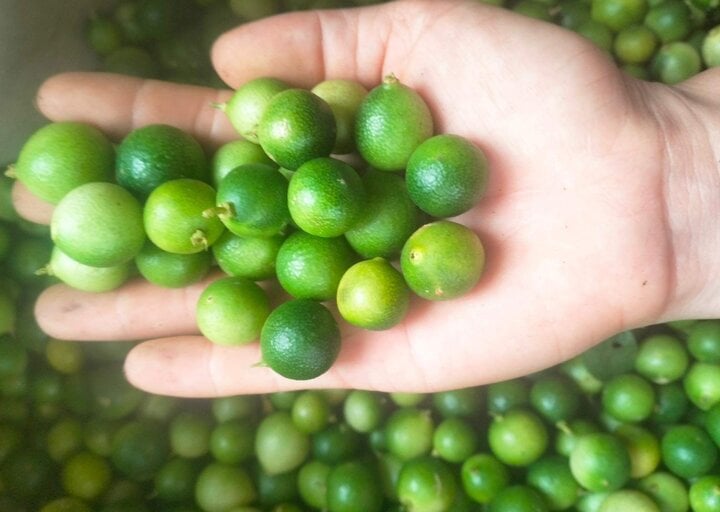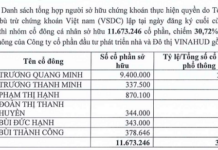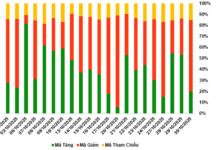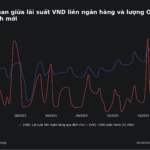Ms. Tin, a trader of wild lemons from Lang Son, shared that it took her almost two days to gather over 10kg of these tiny citrus fruits. As it is still the beginning of the season, there is a limited supply of wild lemons, and she couldn’t fulfill all her customers’ orders.
According to Ms. Tin, for the past four years, wild lemons from Mau Son have been in high demand during the season, mostly for medicinal purposes. Despite the high prices at the start of the season, customers are constantly seeking them out. “Many believe that wild lemons at the beginning of the season have a higher concentration of essential oils in their peels, making them more effective for treating coughs when infused with honey,” Ms. Tin explained.

Wild lemons from Mau Son. (Photo: NVCC)
Currently, the price of wild lemons from Mau Son ranges from 55,000 to 60,000 VND per kg. At the beginning of the season, Ms. Tin could only gather about ten kilograms daily, but during the peak season, she expects to collect a few hundred kilograms. Despite this, she confidently predicts, “Whatever the quantity, it will all be sold out.” This year, the wild lemon crop from Mau Son is smaller than last year’s, so prices are expected to rise.
In the past, locals used to forage for wild lemons in the forest. However, after recognizing the economic value of these lemons, many residents near Mau Son started cultivating them near their homes for easier care and harvesting. Consequently, wild lemons from the forest are still available in the market but in very limited quantities.
According to Ms. Tin, the quality of wild lemons from forest-grown and garden-grown trees is comparable. The main difference lies in their appearance: forest-sourced lemons tend to be smaller and less uniform in size, while garden-grown lemons are larger, more consistent in size, and visually appealing.
Mr. Nguyen Thanh Son, a resident of Long Bien district in Hanoi, shared his experience with cultivating the Mau Son wild lemon variety. He found the trees to be easy to grow and requiring minimal care, but their growth rate is slower compared to other lemon varieties. He has been growing about a dozen Mau Son wild lemon trees in his garden for the past four years. Although the trees have started bearing fruit, their yield is relatively low, with each tree producing only around 1-2 kg of lemons.
As the harvest is just enough for personal consumption, Mr. Son does not sell them. Occasionally, he sources wild lemons from Mau Son to fulfill customer orders. He is also experimenting with grafting wild lemons onto grapefruit trees, hoping to increase fruit production in the future.
Mr. Son added that wild lemons are tiny, even smaller than quats. They have a mild sourness, and he believes their unique quality lies in their essential oil content. “I think what sets wild lemons apart is their essential oil content. Whether used for honey infusion or making salted lemons, no other lemon variety can match their effectiveness,” he said.

Mau Son wild lemon tree grown in a garden. (Photo: NVCC)
Mr. Son first learned about the Mau Son wild lemon tree over a decade ago at an agricultural fair, and it was only in recent years that he had the opportunity to acquire and cultivate this variety in his garden. He didn’t expect the trees to thrive in Hanoi’s climate, but they exceeded his expectations with abundant flowering and fruiting, consistently producing high-quality lemons year after year.
Although this lemon variety is native to Vietnam, Mr. Son shared that finding seedlings online is challenging. As a result, he had to travel to Mau Son in Lang Son to purchase the seedlings for his garden.





































